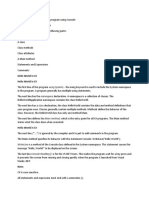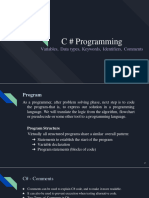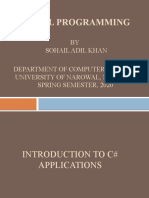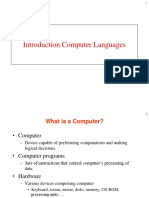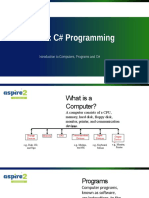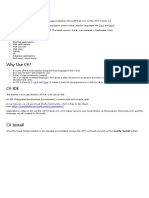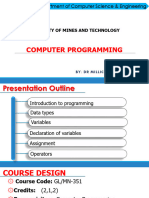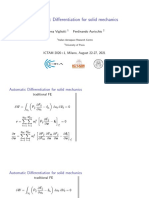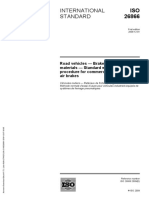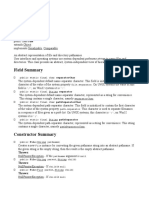0% found this document useful (0 votes)
69 views15 pagesWeek 1: The C# Language: Chapter 1: Variables and Expressions
The document discusses introducing the C# programming language and .NET Framework. It explains that the .NET Framework is a development platform that supports multiple languages and uses a Common Language Runtime. C# applications written within the .NET Framework are compiled to Microsoft Intermediate Language code and executed by the runtime. The document also introduces Visual Studio as an integrated development environment for building various types of .NET and C# projects, including graphical Windows applications and web applications.
Uploaded by
vipnatCopyright
© Attribution Non-Commercial (BY-NC)
We take content rights seriously. If you suspect this is your content, claim it here.
Available Formats
Download as PDF, TXT or read online on Scribd
0% found this document useful (0 votes)
69 views15 pagesWeek 1: The C# Language: Chapter 1: Variables and Expressions
The document discusses introducing the C# programming language and .NET Framework. It explains that the .NET Framework is a development platform that supports multiple languages and uses a Common Language Runtime. C# applications written within the .NET Framework are compiled to Microsoft Intermediate Language code and executed by the runtime. The document also introduces Visual Studio as an integrated development environment for building various types of .NET and C# projects, including graphical Windows applications and web applications.
Uploaded by
vipnatCopyright
© Attribution Non-Commercial (BY-NC)
We take content rights seriously. If you suspect this is your content, claim it here.
Available Formats
Download as PDF, TXT or read online on Scribd
/ 15











